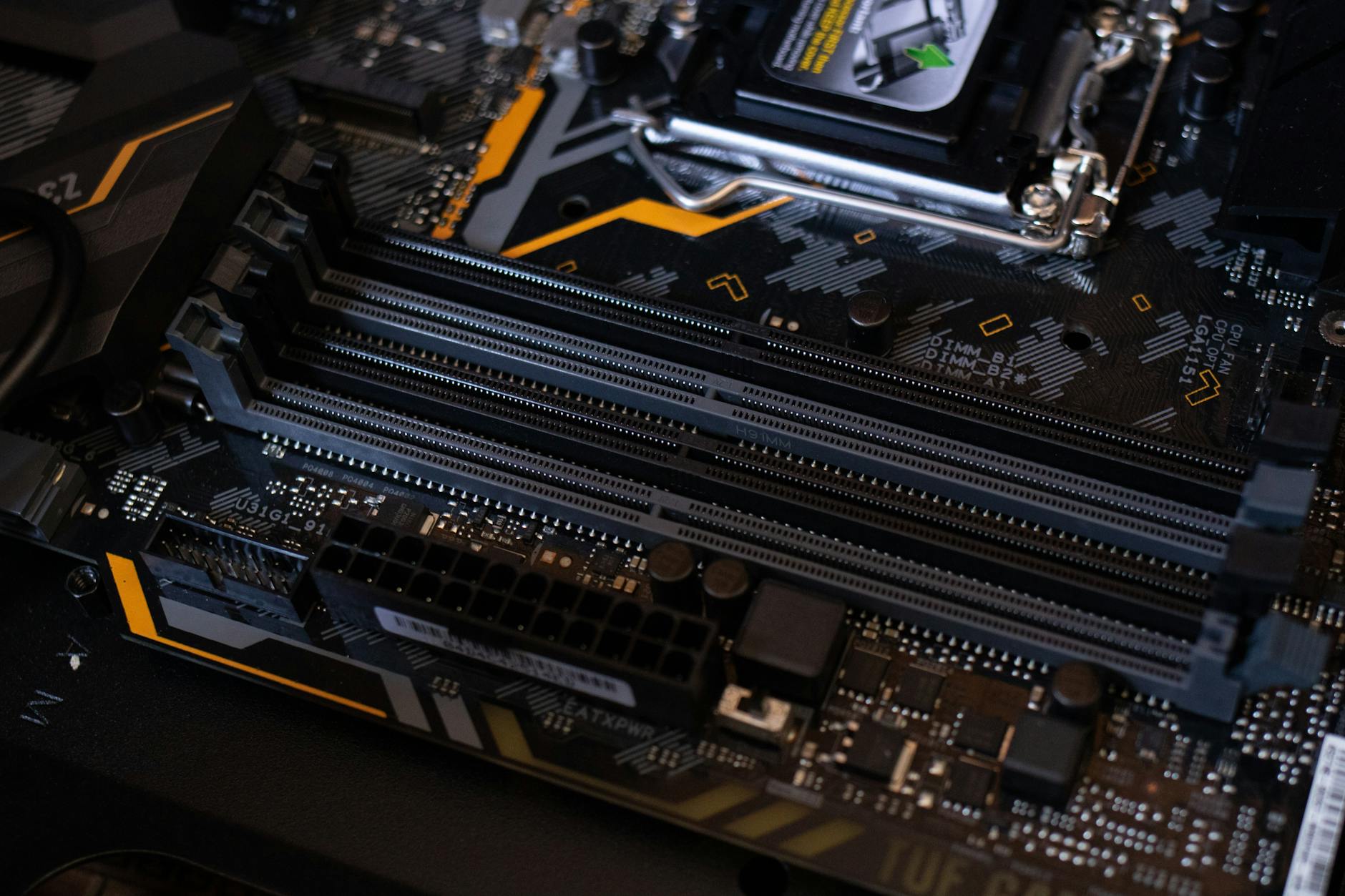How to Choose the Best Audio-Visual Equipment for Schools in Australia

Assessing School Needs
When aiming to optimise technology in educational settings, assessing school needs is a crucial first step. It's essential to evaluate the existing AV infrastructure—like the hearing loop systems and av cables—to identify specific areas for improvement. This helps educators who frequent hubs such as Federation Square, understand how technology can enhance learning experiences.
Evaluating Classroom Spaces
Examining classroom spaces involves considering both physical and technological elements. The arrangement of furniture, lighting, and acoustics play a significant role in determining the optimal setup for audio-visual technologies. For instance, classroom dimensions affect sound distribution and projector placements, affecting how tools like a universal remote are utilised.
Identifying Student Demographics
Understanding the diverse student demographics is key in tailoring technological solutions. Different age groups and learning capabilities may require varying levels of engagement. For instance, younger students might benefit from interactive and visually appealing tools, while older students may require technology that supports in-depth research and presentations.
Understanding Curriculum Requirements
Aligning technological advancements with curriculum requirements is another critical aspect of this process. The use of AV technologies should not only support but also enhance educational objectives. Engaging both educators and students in discussions about curriculum needs ensures that technology contributes positively to learning outcomes, fostering innovation in teaching methodologies.
Overall, understanding these components can help in effectively integrating technology into educational settings, thereby creating a more dynamic and engaging learning environment.
Audio Equipment Selection
Choosing Microphones and Speakers
When selecting audio equipment for educational settings, it's crucial to consider microphones and loudspeakers that cater to the unique acoustics of each classroom. Over the years, advancements in audio technology have made it easier to find equipment that can enhance listening experiences, whether in a lecture hall or a small classroom. My role often involves visiting local places like electronics emporiums in Chadstone Shopping Centre, a hub of innovation where the latest tech is available. These spaces provide an array of solutions tailored for educational environments.
Acoustics and Sound Quality
Attention to acoustics is key when ensuring high-quality sound in classrooms. The layout of a room can greatly impact sound distribution, and a well-placed loudspeaker can address any issues effectively. Consider equipment that offers flexibility in installation to complement various room configurations. This ensures that students, regardless of where they are seated, will have a consistent auditory experience.
Integration with Existing Systems
Integrating new systems with existing ones requires strategic planning. Often, I find myself exploring the practicality of PTZ cameras complemented by contemporary sound systems to ensure seamless operations. In educational districts near Degraves Street, educators have successfully adopted such integrated systems to facilitate better engagement. This thoughtful alignment of technologies supports streamlined teaching methods, encouraging interaction and participation in classroom activities.
Visual Equipment Choices
Projectors and Screens
Selecting the right musical equipment for classrooms can significantly enhance the learning experience. In a setting where information needs to be presented clearly, projectors and screens are essential. Today’s advanced models cater to various room sizes and lighting conditions, ensuring vibrant visuals. While choosing projectors, thinking about the lumens, resolution, and throw distance can make a significant difference in picture quality. Screens ought to be compatible with the projector's capabilities to maintain image clarity and size.
Interactive Whiteboards
Interactive whiteboards are transforming classrooms into lively educational zones. They allow students and teachers to engage directly with digital content. These boards can replace traditional tools and combine various elements of lesson delivery in a single device. Features like multitouch capabilities, compatibility with learning software, and ease of integration with equipment akin to acoustic panels are vital considerations for educators looking to transform their teaching spaces. Notably, regions close to Degraves Street are witnessing increased adoption of these tools, leading to enriched educational experiences.
Enhancing Classroom Lighting
Lighting plays a pivotal role in creating an optimal learning environment. The focus should be on reducing glare on screens and boards while providing consistent illumination. Using LEDs can offer energy-efficient solutions that last longer and deliver a balanced light spectrum. Moreover, effective classroom lighting can be adjusted for different activities, promoting concentration and reducing eye strain for students. When combined strategically with other technologies, lighting elevates the classroom atmosphere, making learning more accessible and enjoyable.
Installation and Maintenance
Planning the Setup
When it comes to planning the setup of audio-visual technology, it’s crucial to consider the needs of your educational environment. A well-designed setup should accommodate various learning styles and support interactive engagement. Start by analysing the physical classroom layout and its acoustics, ensuring the placement of speakers does not obstruct the view of projectors. An organised cable management system will be essential to avoid potential hazards. You may also want to consider incorporating an antenna tracking system for enhanced connectivity during presentations.
Routine Maintenance Practices
Regular maintenance is the key to prolonging the life of your audio-visual equipment. Establishing a maintenance schedule can help identify issues before they disrupt learning. Regular checks might include inspecting cables for wear and tear, cleaning equipment to prevent dust build-up, and updating software for devices like interactive whiteboards. It’s also beneficial to have a troubleshooting guide for common technical issues readily accessible to staff. When well-maintained, even complex systems comprising guitars and basses for music lessons can provide consistent performance.
Ensuring Technical Support
Having reliable technical support in place can be invaluable. Consider developing a support network that includes in-house IT experts and external service providers. For ongoing systems like interactive smartboards and projectors, align with vendors who offer dedicated technical support. Encourage staff to participate in technical workshops to build competency in equipment usage, thereby minimising downtime. By providing training resources, such as manuals and video tutorials, educators can feel more confident in managing technology challenges without constant external help.
Final Thoughts on Advanced Educational Technology
Embracing Emerging Technologies
In today's dynamic educational landscape, harnessing the power of emerging technologies can be a game-changer. Our classrooms have become epicentres of innovation, with institutions near Degraves Street and cultural hubs such as Federation Square leading the charge. It's crucial for educators to stay updated with technological advancements, transforming teaching methods and enriching student experiences. A stroll through the numerous electronics emporiums at Chadstone Shopping Centre reveals a vast array of devices, each promising to enhance learning environments in unique ways.
Leveraging Audio-Visual Innovations
Integrating state-of-the-art audio-visual technology can significantly enhance the learning experience. Whether it's through interactive whiteboards that transform traditional lessons into engaging discussions or optimising acoustics for crystal-clear sound, the proper implementation of these tools can create immersive learning settings. Consider, for instance, how modern microphones paired with adaptive speaker systems can ensure every voice is heard, fostering inclusivity and participation.
Sustaining Technological Integration
For long-term success, focus not only on adopting new technology but also ensuring systems remain sustainable and efficient. Routine maintenance and robust technical support networks are key to avoiding disruptions. Importantly, training programs are essential to empower educators and administrators, allowing them to leverage audio-visual innovations optimally. With proactive planning and a commitment to continuous development, the potential of educational technology becomes boundless, inspiring educators to redefine learning through creative and meaningful applications.


